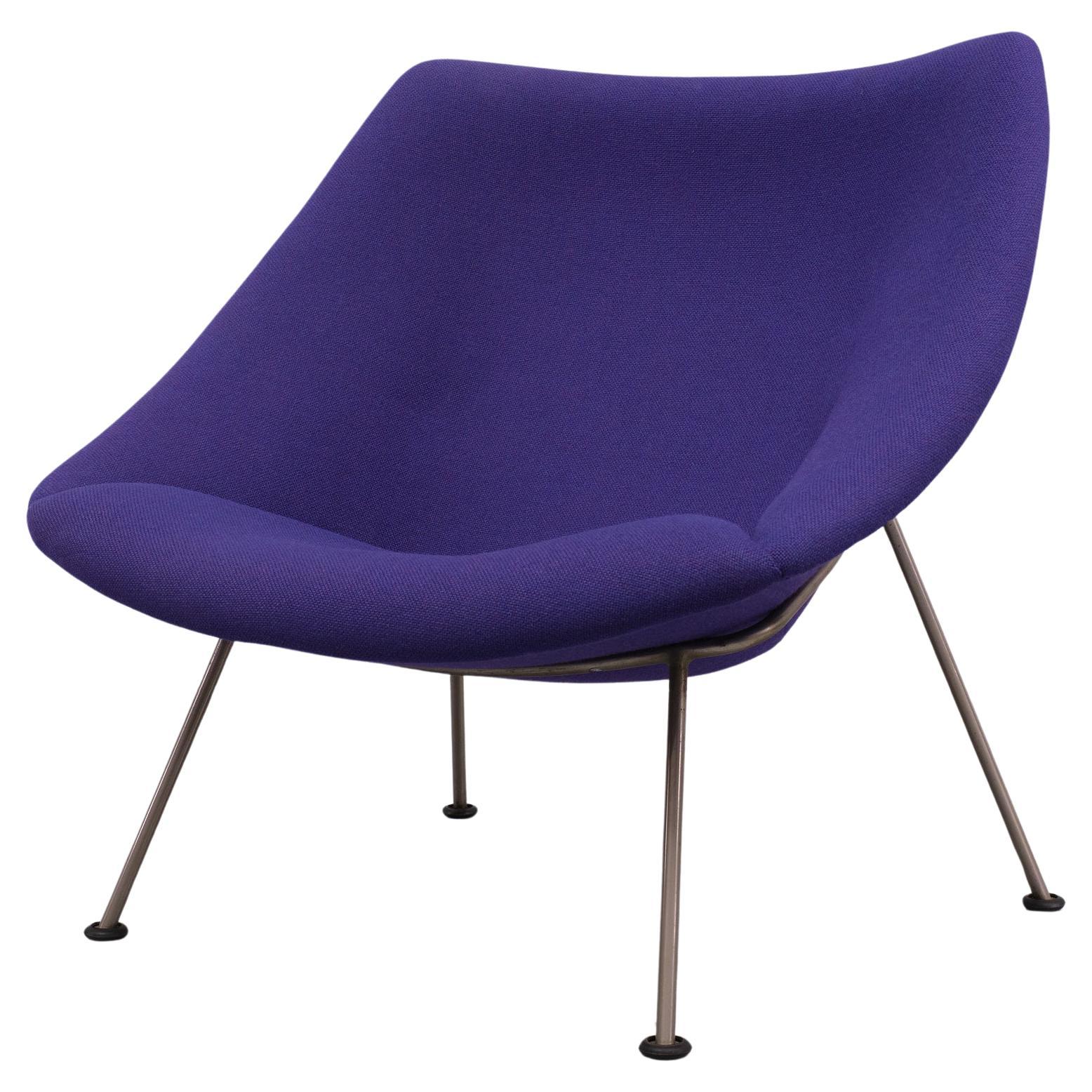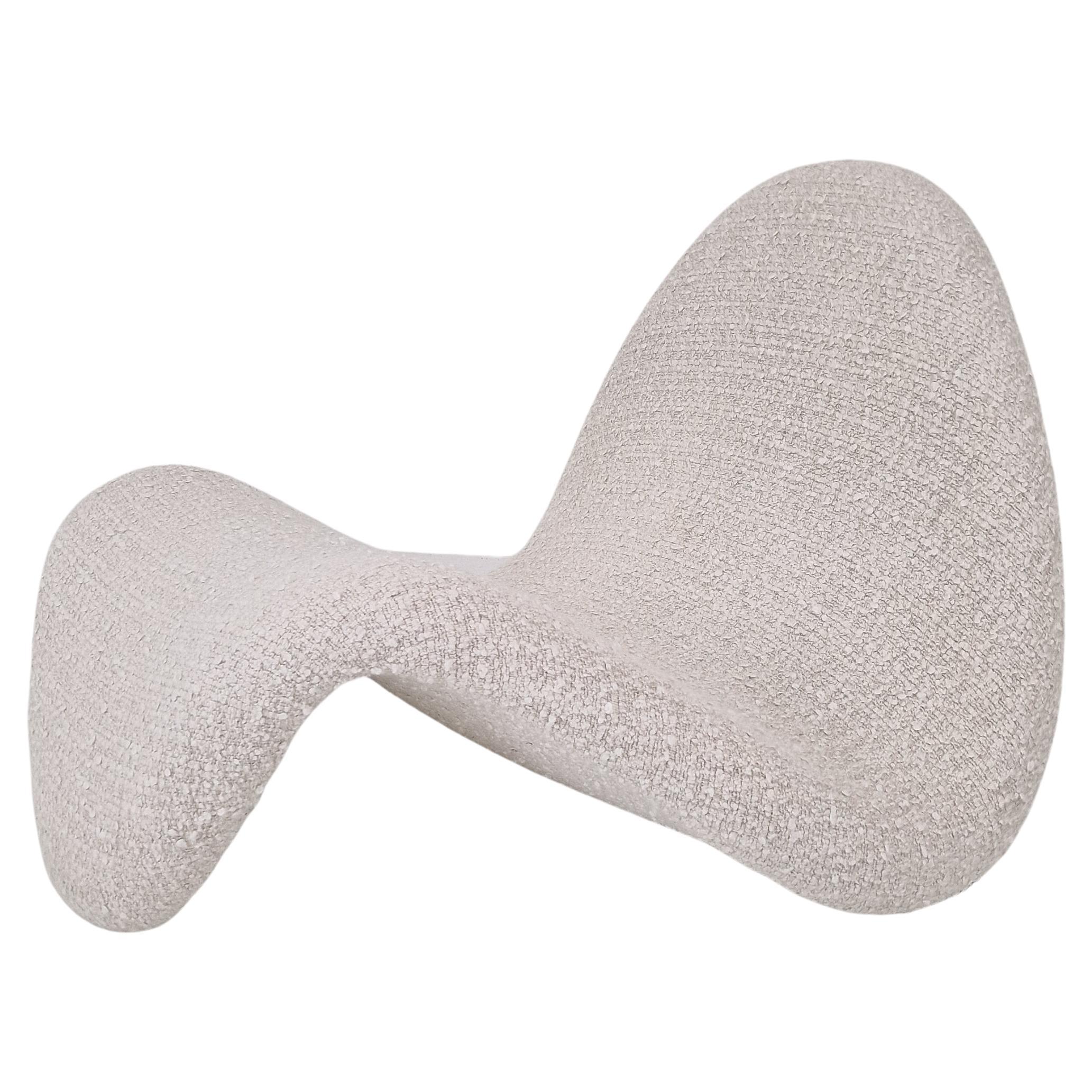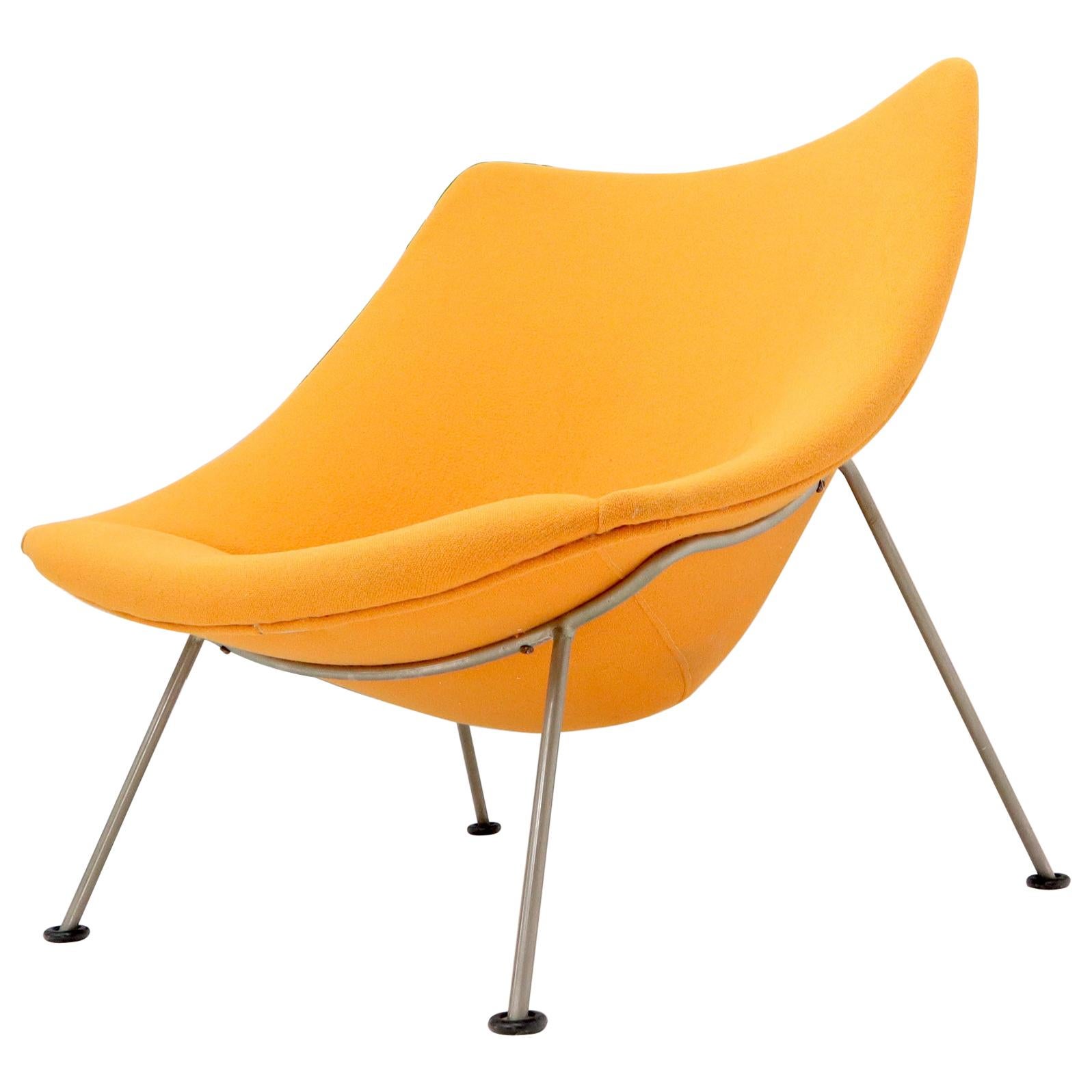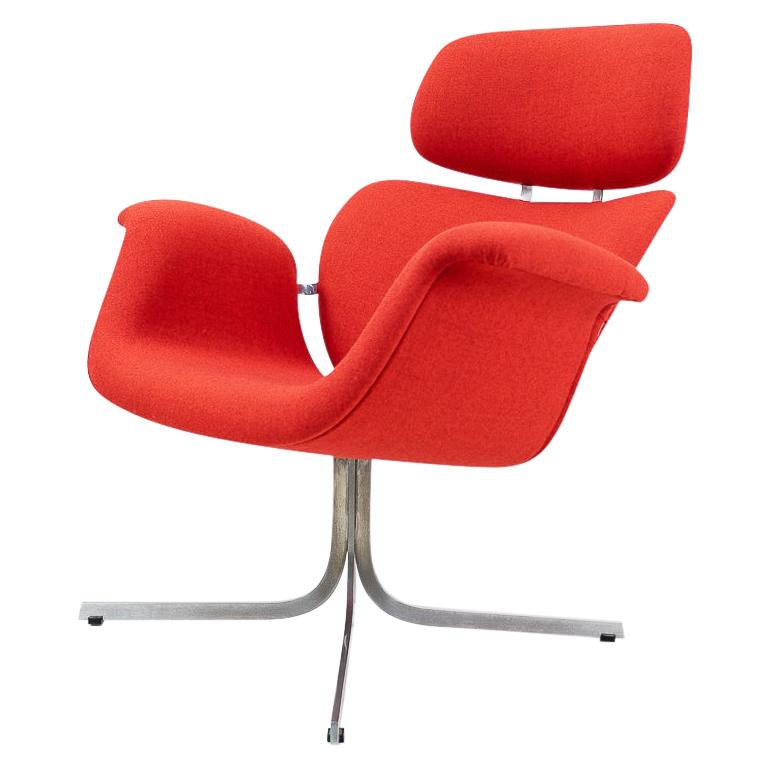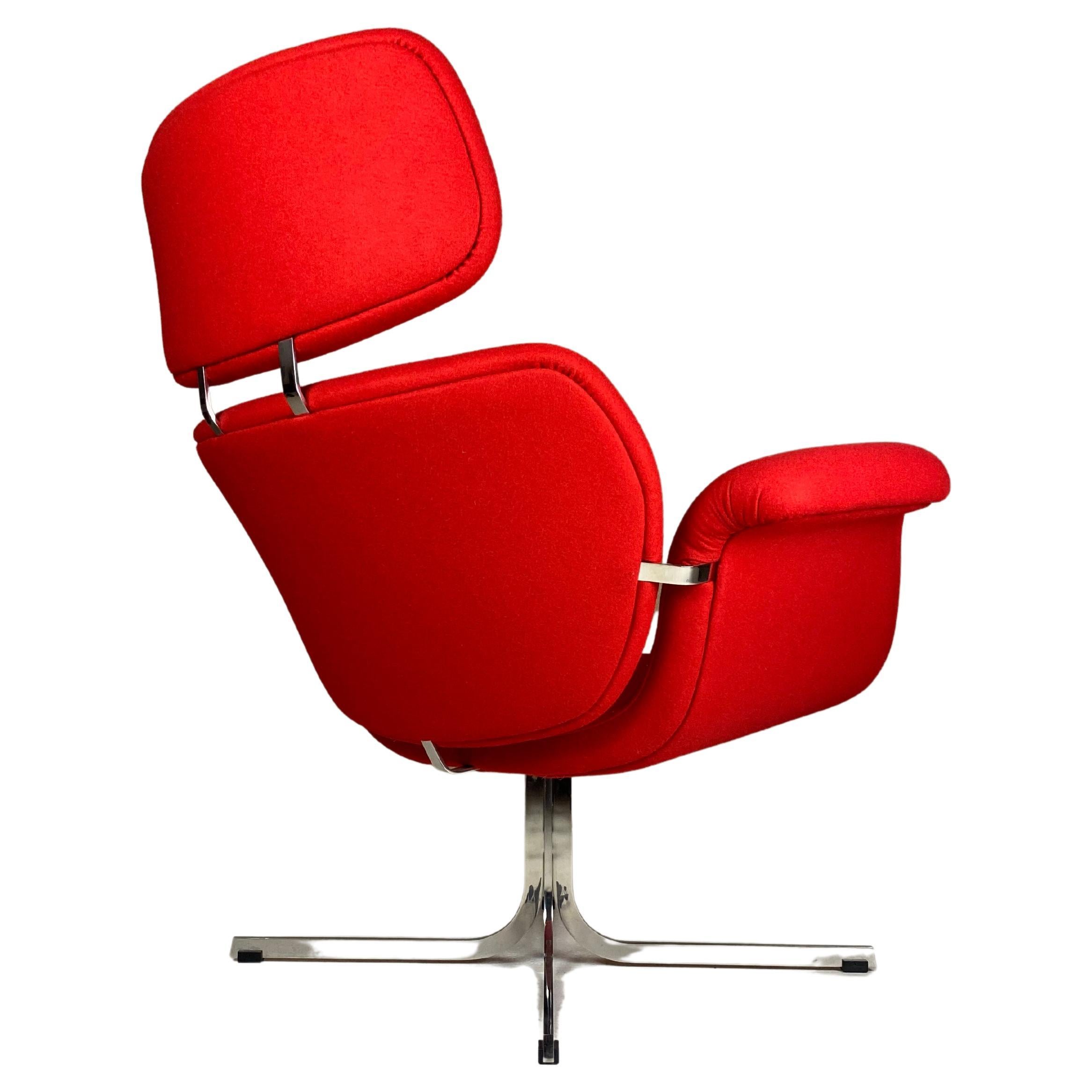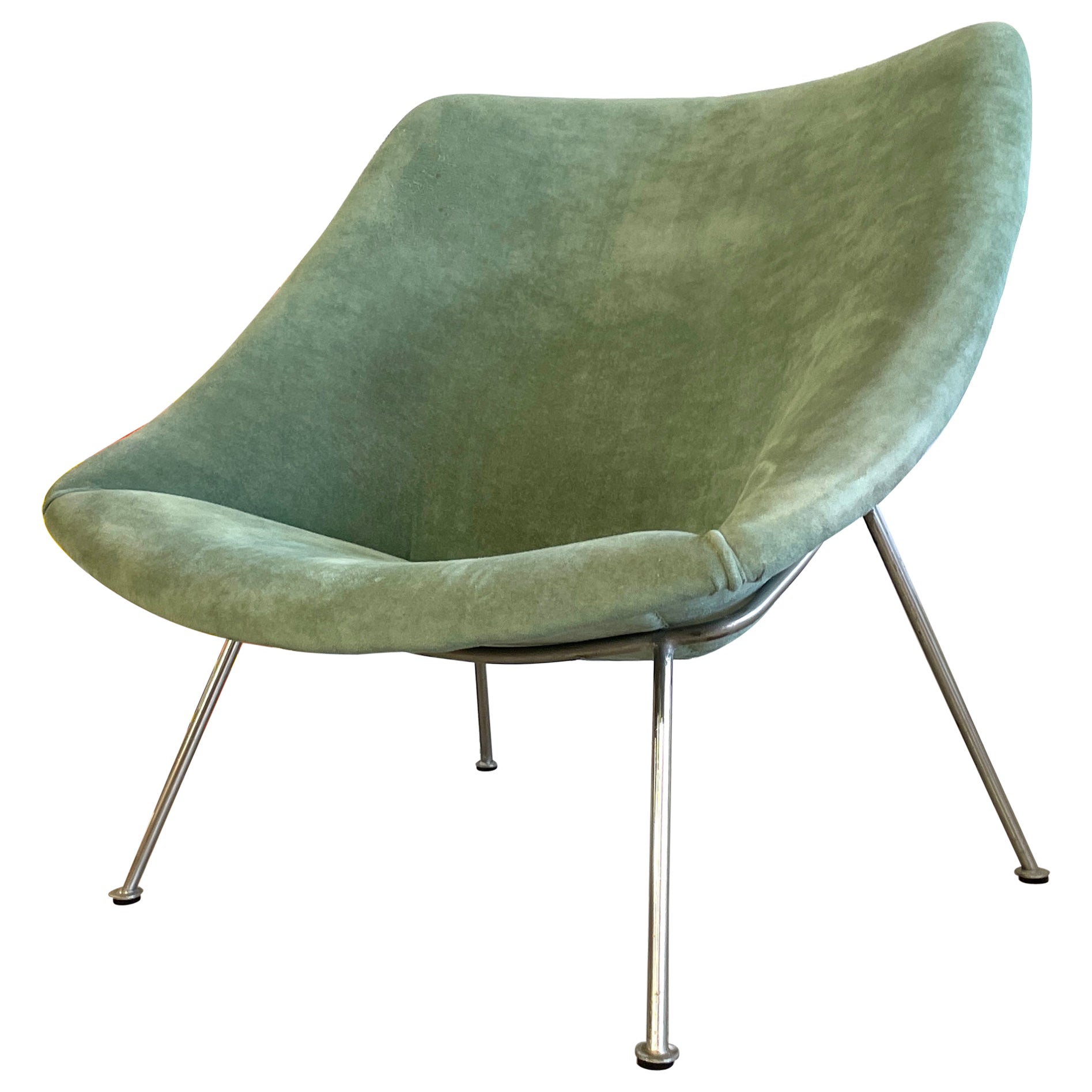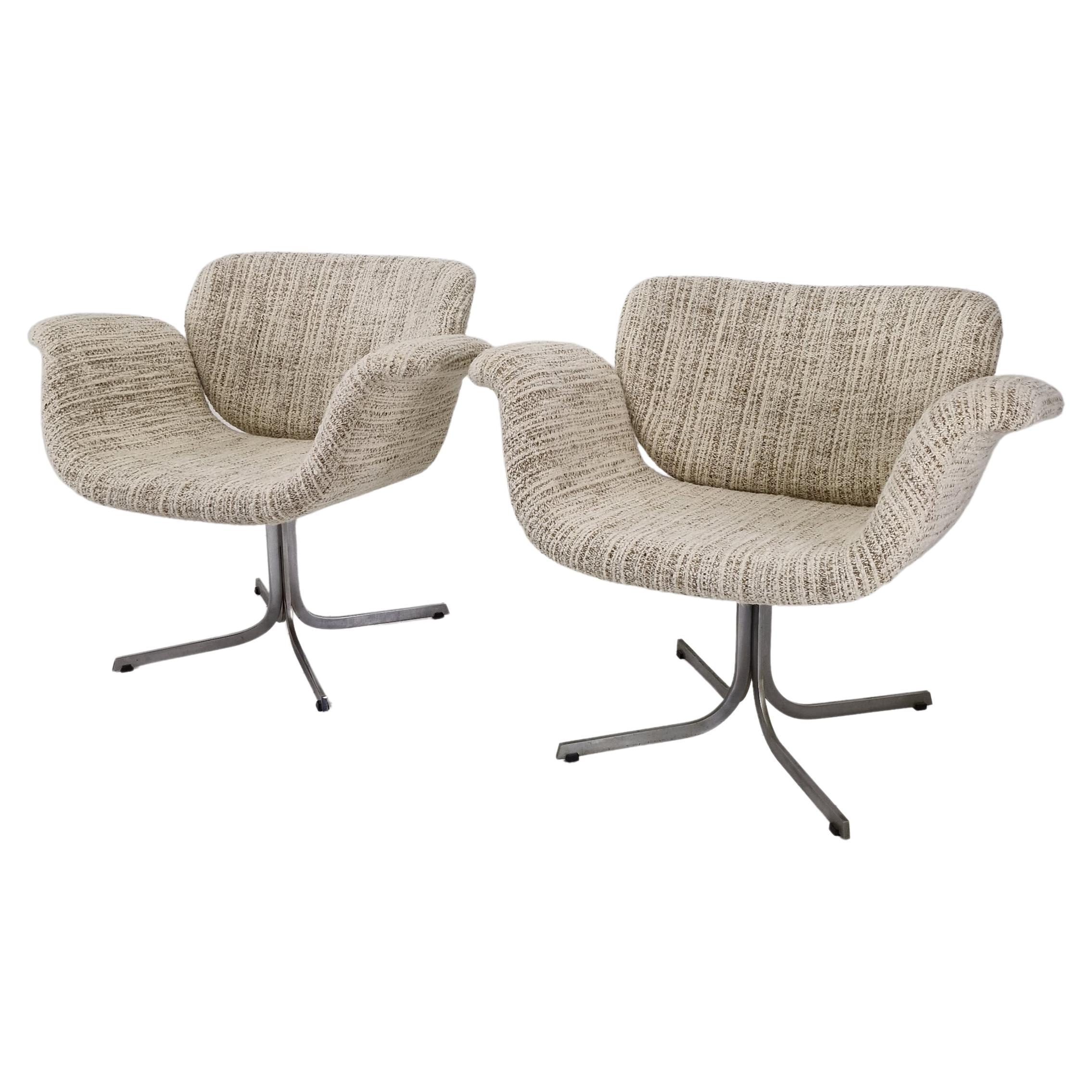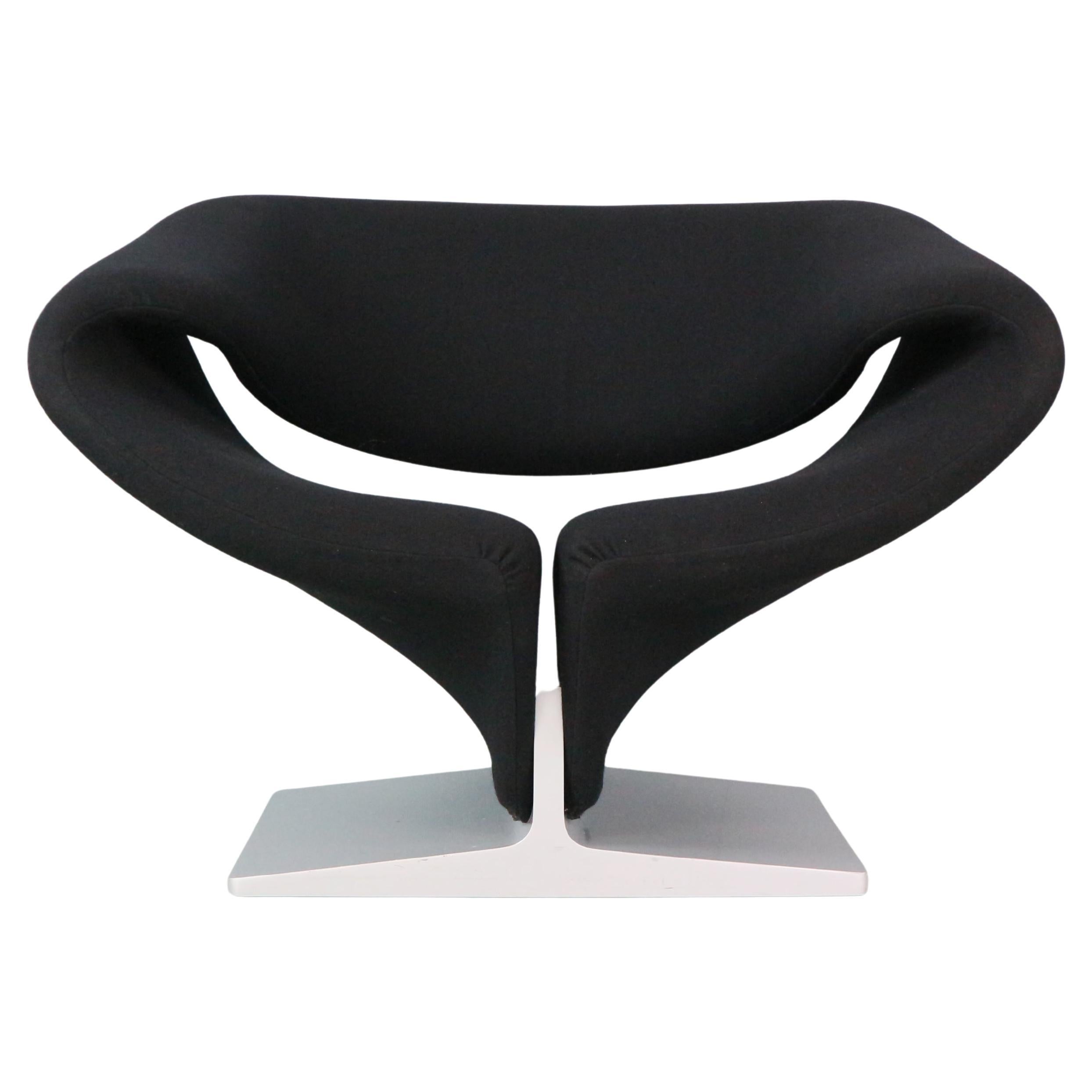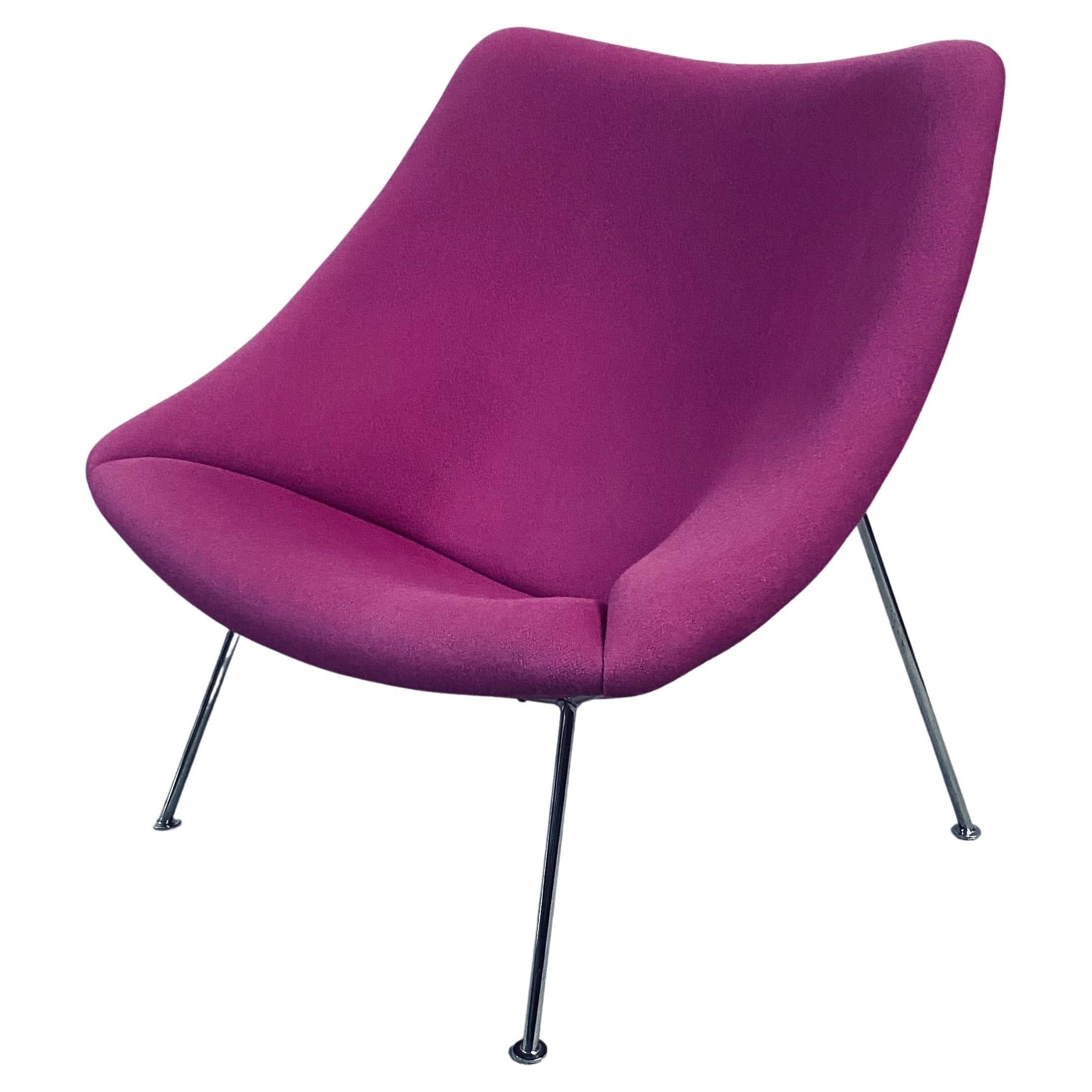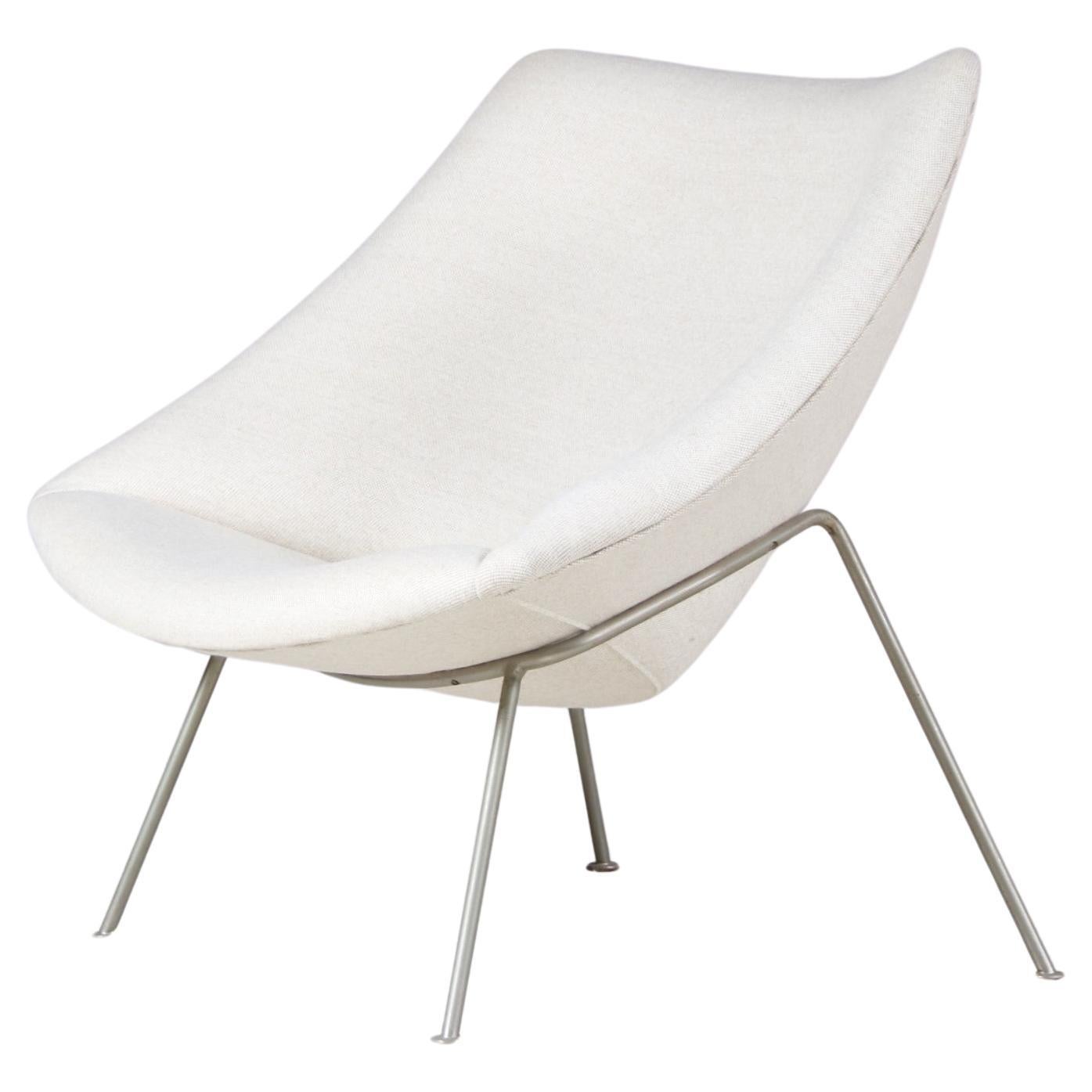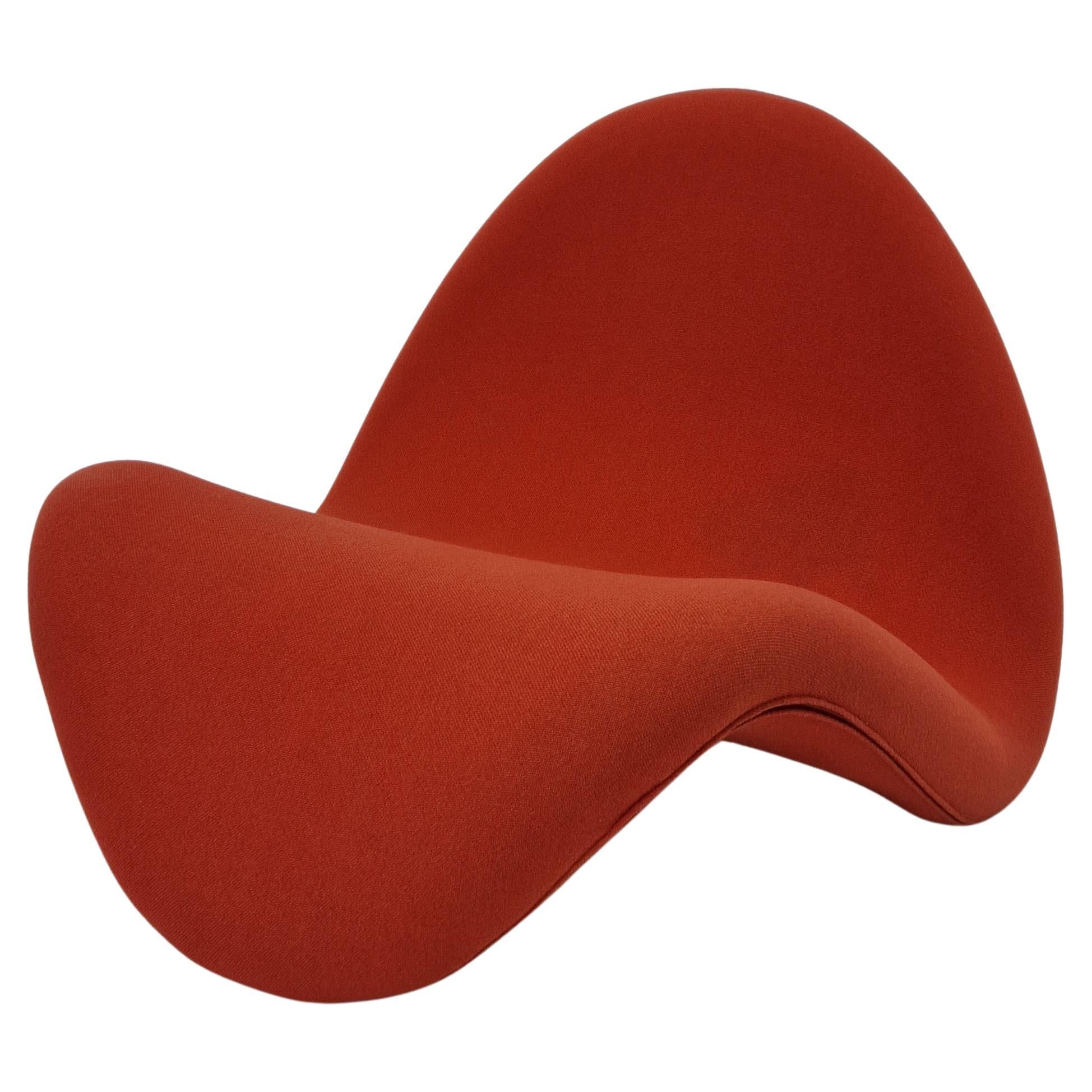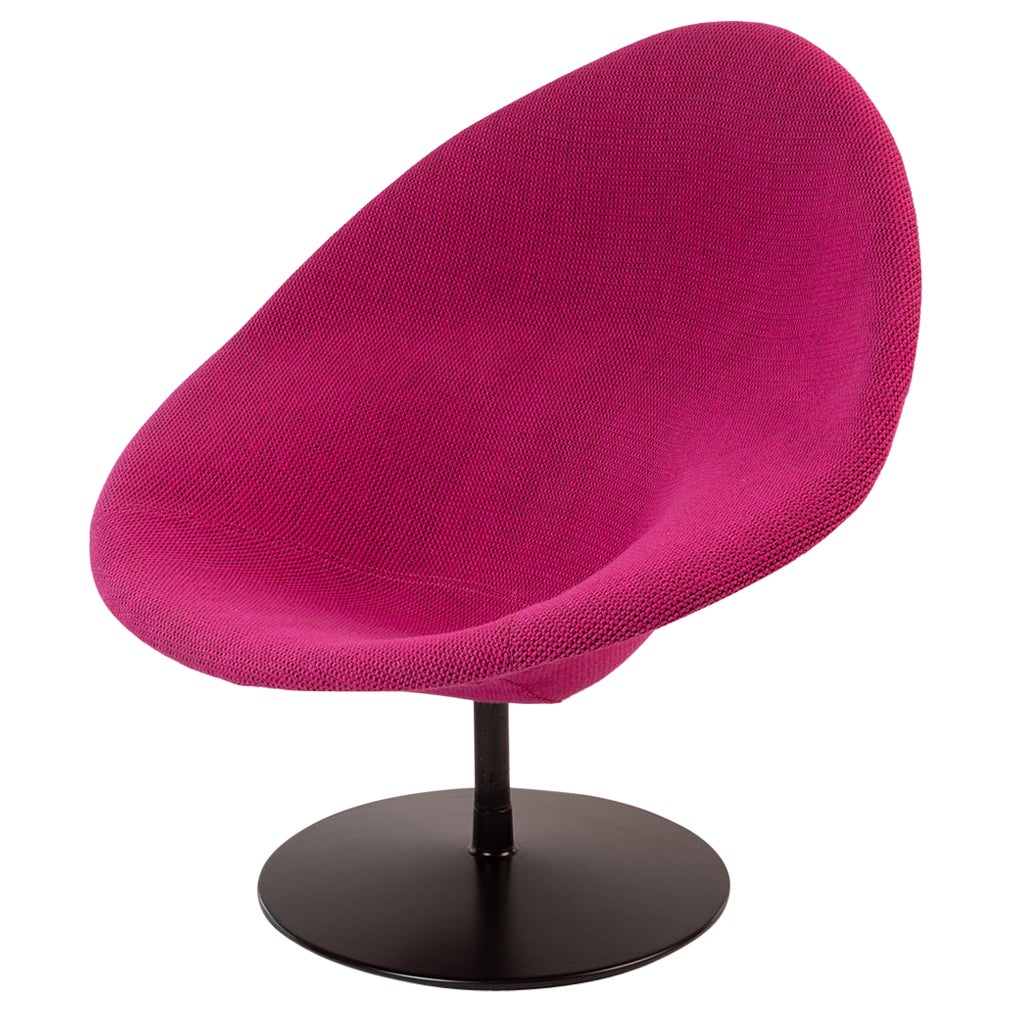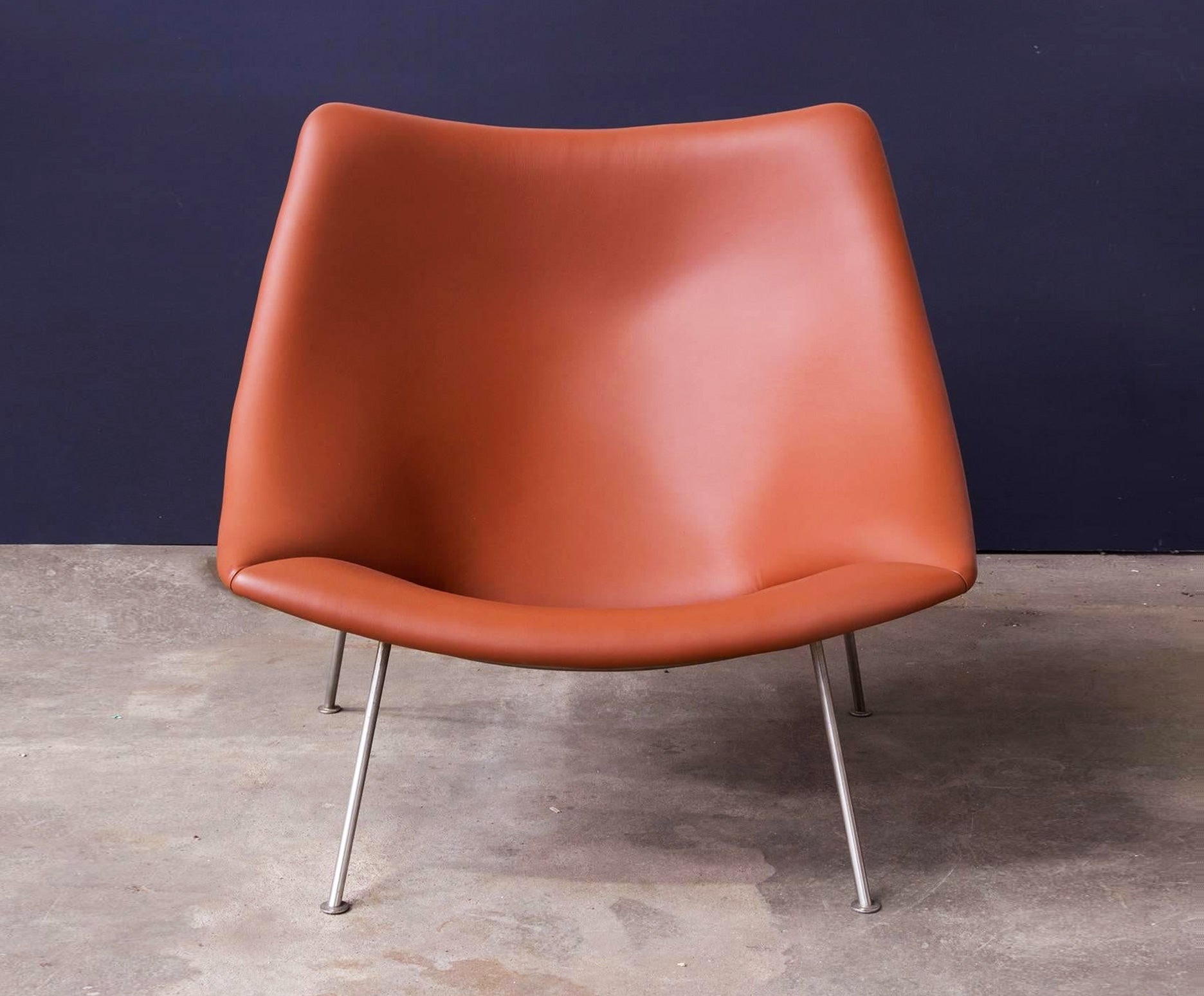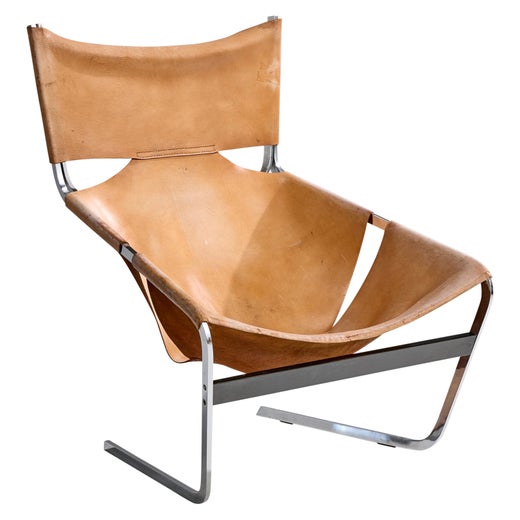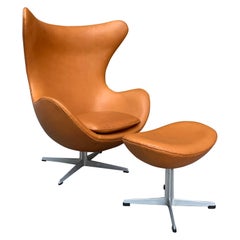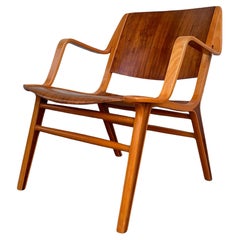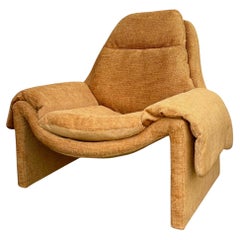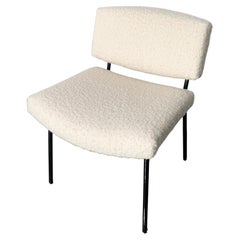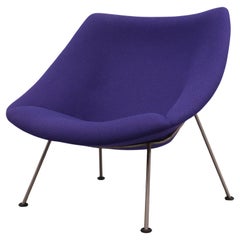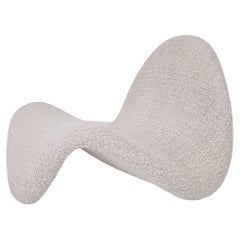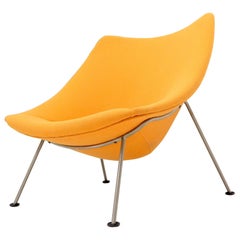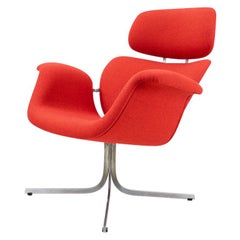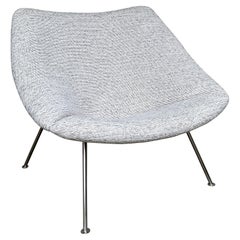
Vintage Oyster Chair by Pierre Paulin for Artifort, 1960s in Kvadrat Upholstery
View Similar Items
Vintage Oyster Chair by Pierre Paulin for Artifort, 1960s in Kvadrat Upholstery
About the Item
- Creator:Pierre Paulin (Designer),Artifort (Manufacturer)
- Design:
- Dimensions:Height: 30.71 in (78 cm)Width: 33.47 in (85 cm)Depth: 28.75 in (73 cm)Seat Height: 15.75 in (40 cm)
- Style:Mid-Century Modern (Of the Period)
- Materials and Techniques:
- Place of Origin:
- Period:
- Date of Manufacture:1960s
- Condition:Reupholstered. Repaired: The frame has been repaired below the seat by a professional metal-worker. The repair is almost invisible and is solid. Wear consistent with age and use. Minor structural damages.
- Seller Location:Vorst, BE
- Reference Number:1stDibs: LU7441234418232
Oyster Chair
The oblong, concave wood seating shell of the Oyster lounge chair, with its soft, form-fitting foam padding and bright fabric upholstery, rests ever so delicately in its minimalist metal underframe. Named for the freshly shucked mollusk its sculptural form resembles, the seductive seat is the work of Pierre Paulin (1927–2009). The revered French designer is perhaps best known for punchy foam chairs, each designed in conjunction with Dutch furniture manufacturer Artifort. Indeed, Paulin’s sensuous, Pop Art–colored hits include the Tongue chair, the Mushroom chair and more — and the Oyster chair, of course, fits well within this group.
As a designer, Paulin had rather humble beginnings. Meeting the academic requirements necessary to pursue school at the university level proved too much for him, so he traveled from his hometown of Paris to the French Riviera. Paulin studied ceramics in Vallaurius (where Pablo Picasso once trained) and then stone carving in Burgundy. After he injured his arm and thus ended his intended career as a sculptor, he returned to Paris and enrolled at the École Comando, where he studied design. This led him to a job with renowned designer Marcel Gascoin in Le Havre. Paulin’s debut exhibition was at the Salon des Arts Ménagers in Paris in 1953, after which he secured work with furniture maker Thonet-France, where Paulin became fascinated with the idea of reinventing conventional chairs.
At Thonet, Paulin began pulling swimwear over chair frames to create comfortable, stretchy seat coverings — it was the start of what would become his bold signature style, which matured fully during his tenure at Artifort in Maastricht, the Netherlands. Using newly available materials from special foams to stretchy, rubbery fabrics, he collaborated with the manufacturing company on numerous chairs throughout the 1960s, a decade rife with sunken living rooms to design with expressive, stylish seating.
While Paulin worked on other projects such as interiors, he is best known for his celebrated chairs. For the Oyster chair in 1960, he crafted a cocoon-like seat that would swaddle its occupant, pairing it with a matching ottoman. It was this chair and its brethren that would inspire numerous designers, including French industrial designer Olivier Mourgue, who created the Djinn chairs used in the Stanley Kubrick film 2001: A Space Odyssey. While the Oyster chair was discontinued by Artifort in 1979, it was brought back into production by popular demand 20 years later.
Pierre Paulin
Pierre Paulin introduced a fresh breeze into French furniture design in the 1960s and ’70s, fostering a sleek new Space-Age aesthetic. Along with Olivier Mourgue, Paulin developed chairs, sofas, dining tables and other furnishings with flowing lines and almost surreal naturalistic forms. And his work became such a byword for chic, forward-looking design and emerging technologies that two French presidents commissioned him to create environments in the Élysée Palace in Paris.
Paulin was born in Paris to a family of artists and designers. He initially sought to become a ceramist and sculptor and was studying in the town of Vallauris near the Côte d'Azur — a center for pottery making, where Pablo Picasso spent his postwar summers crafting ceramics — but broke his hand in a fight. He enrolled at the École Camondo, the Paris interior design school. There, Paulin was strongly influenced by the work of Charles and Ray Eames, George Nelson and Arne Jacobsen, as was reflected in his early creations for the manufacturer Thonet-France.
It was at the Dutch firm Artifort, which he joined in 1958, where Paulin blossomed. In a few years, he produced several of his signature designs based on abstract organic shapes. These include the Butterfly chair (1963), which features a tubular steel frame and slung leather, and a group of striking seating pieces made with steel frames covered in polyurethane foam and tight jersey fabric: the Mushroom (1960), Ribbon (1966) and Tongue (1967) chairs. The revered designer not only introduced new construction techniques to Artifort furniture but contributed fresh materials, Pop art colors and dazzling shapes to the mid-century modern era as a whole.
In 1971, the Mobilier National — a department of France’s Ministry of Culture in charge of furnishing top-tier government offices and embassies — commissioned Paulin to redesign President Georges Pompidou’s private apartment in the Élysée Palace. In three years, Paulin transformed the staid rooms into futuristic environments with curved, fabric-clad walls and furnishings such as bookcases made from an arrangement of smoked-glass U shapes, flower-like pedestal chairs and pumpkin-esque loungers.
Ten years later, the Mobilier National called on Paulin again, this time to furnish the private office of President François Mitterand. Paulin responded with an angular, postmodern take on neoclassical furniture, pieces that looked surprisingly at home in the paneled, Savonnerie-carpeted Louis XVI rooms. As those two Élysée Palace projects show, Paulin furniture works well both in a total decor or when used as a counterpoint to traditional pieces. His creations have a unique personality: bright and playful yet sophisticated and suave.
Find vintage Pierre Paulin lounge chairs, armchairs, coffee tables and other furniture on 1stDibs.
More From This Seller
View AllMid-20th Century Danish Mid-Century Modern Lounge Chairs
Aluminum
Mid-20th Century Danish Mid-Century Modern Lounge Chairs
Plywood, Birch, Teak
Mid-20th Century Italian Mid-Century Modern Lounge Chairs
Fabric, Upholstery
Mid-20th Century Belgian Mid-Century Modern Slipper Chairs
Steel
Mid-20th Century French Mid-Century Modern Slipper Chairs
Steel
Mid-20th Century Swedish Scandinavian Modern Candlesticks
Brass
You May Also Like
Vintage 1960s Dutch Mid-Century Modern Lounge Chairs
Fabric
Vintage 1960s Dutch Mid-Century Modern Lounge Chairs
Fabric
20th Century Danish Mid-Century Modern Lounge Chairs
Wool
Vintage 1960s Dutch Mid-Century Modern Lounge Chairs
Metal
Vintage 1960s French Mid-Century Modern Lounge Chairs
Fabric
Vintage 1960s Dutch Space Age Lounge Chairs
Chrome
Recently Viewed
View AllRead More
At Château La Coste, Pierre Paulin’s Visionary Home Concept Finally Comes to Life
Now synonymous with 1960s and ’70s French chic, the designer conceived his modular modernist furnishings to change the way we decorate.
Exploring Our Current Obsession with Sixties Style
A new exhibition in Philadelphia stars a complex decade that continues to inspire.
